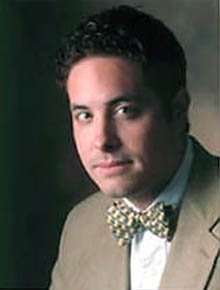Dr. Michael R. King
The ScienceDaily article Cancer-killing Invention Also Harvests Stem Cells said
“Associate Professor Michael King of the University of Rochester Biomedical Engineering Department has invented a device that filters the blood for cancer and stem cells. When he captures cancer cells, he kills them. When he captures stem cells, he harvests them for later use in tissue engineering, bone marrow transplants, and other applications that treat human disease and improve health.A possible way to use the cancer-killing invention is to implant the device in the body before primary tumor surgery or chemotherapy. When doctors remove a primary tumor, the procedure itself can release cancer cells into the bloodstream. King’s device would grab those cancer cells and kill them, greatly reducing the possibility of metastasis.
Associate Professor King envisions that the device would use a shunt similar to the type used in hospitals today. This shunt would reside on the exterior of the arm or be implanted beneath the skin. Some of the blood flow would bypass the capillary bed and instead go into the shunt, which could remain implanted for many weeks, continually removing and killing cancer cells. King’s first targets are colorectal cancer and blood malignancies such as leukemia.”
Michael R. King, Ph.D. is Associate Professor, Department of Biomedical Engineering, University of Rochester.
Mike’s primary research interest involves the study of adhesive interactions of flowing cells with reactive surfaces. Such phenomena are important in leukocyte recruitment during inflammation, platelet deposition during thrombosis and hemostasis, and engraftment of transplanted stem cells and circulating cancer cells.
Most adhesive interactions of blood cells are mediated by cell surface receptors that recognize specific counter-receptors on the blood vessel wall or on other circulating cells. These adhesion receptors can have rapid, force-dependent binding kinetics, causing stochastic transitions between free stream flow, transient “rolling” adhesion, and firm arrest. Several temporally-varying physical parameters combine to control the state of cell adhesion under flow, such as the site density and spatial distribution of receptor molecules, the level of cell activation, and the local fluid flow environment.
These mechanisms combine in a complex and nonlinear manner, making a complete theoretical model necessary for accurate prediction of cell behavior. Over the past five years, his laboratory has used a combination of state-of-the-art numerical simulations, in vitro flow chamber experiments with human cells, and collaborative animal experiments to elucidate the dynamics of multicellular adhesion phenomena. He has been able to exploit this knowledge of physiological blood cell trafficking to develop new applications for the manipulation and isolation of rare populations of cells, and has begun to commercialize a range of products for research and clinical use through a joint startup venture between the University of Rochester and the private company Biomed Solutions, LLC. Future work by his laboratory is focused in three key areas:
- Multiscale computational modeling of platelet adhesion under flow
- Experimental and computational study of the basic physical mechanisms of neutrophil recruitment in inflammation
- Development of implantable stem cell and cancer therapy devices, and in vitro purification technologies for stem cell populations
Mike edited Principles of Cellular Engineering: Understanding the Biomolecular Interface, and coauthored Heat Transfer and Fluid Flow in Minichannels and Microchannels, Multiparticle adhesive dynamics: Hydrodynamic recruitment of rolling leukocytes, Multiparticle Adhesive Dynamics. Interactions between Stably Rolling Cells, and Measurement of the inertial lift on a moving sphere in contact with a plane wall in a shear flow. Read the full list of his publications!
He is on the Editorial Boards of Research & Reviews in BioSciences, Open Nanoscience Journal, Open Nanoscience Reviews, Open Biomedical Engineering Journal, Open Biomedical Engineering Reviews, and Open Tissue Engineering & Regenerative Medicine Journal.
Mike earned his BS (Magna Cum Laude) in Chemical Engineering at the University of Rochester in 1995 and his PhD in Chemical Engineering at the University of Notre Dame in 1999.
Read his LinkedIn profile.
